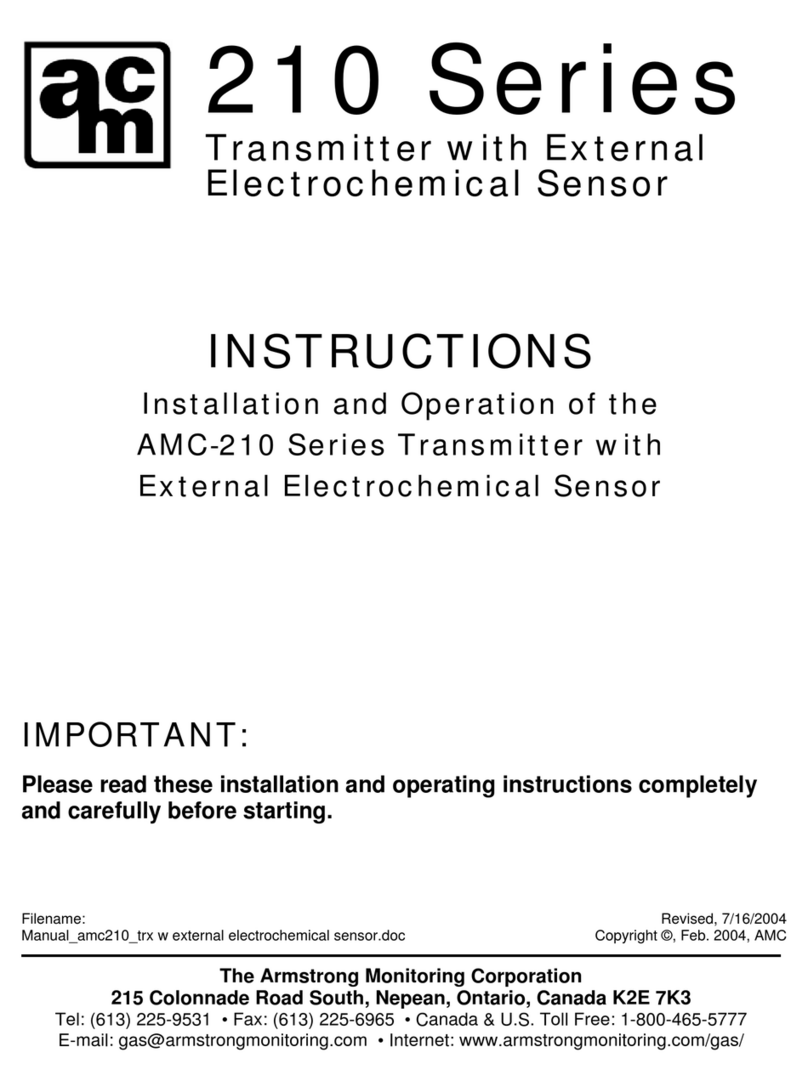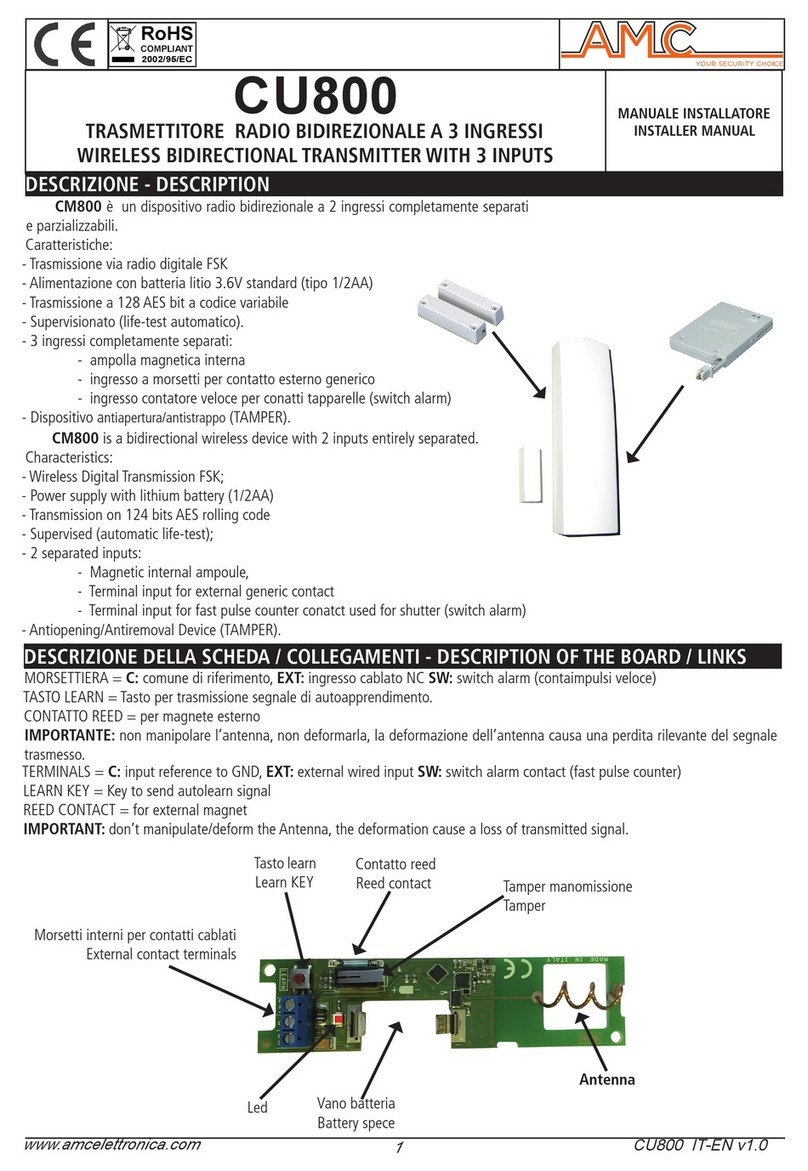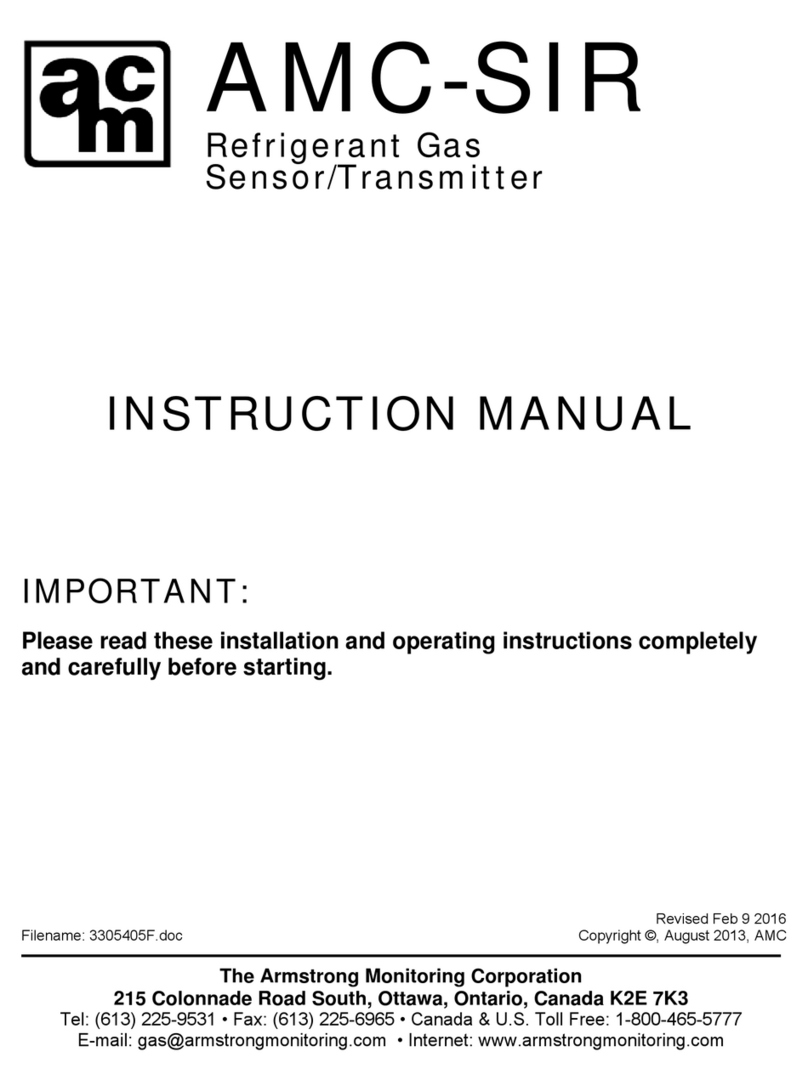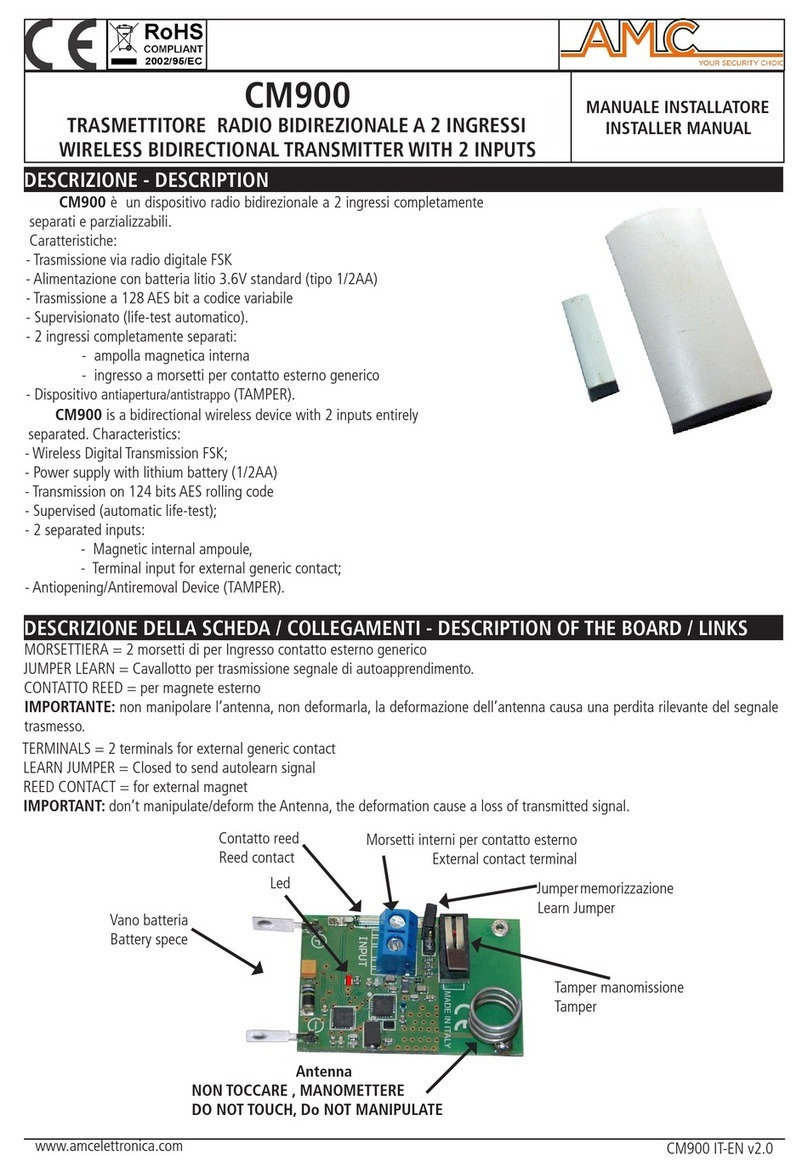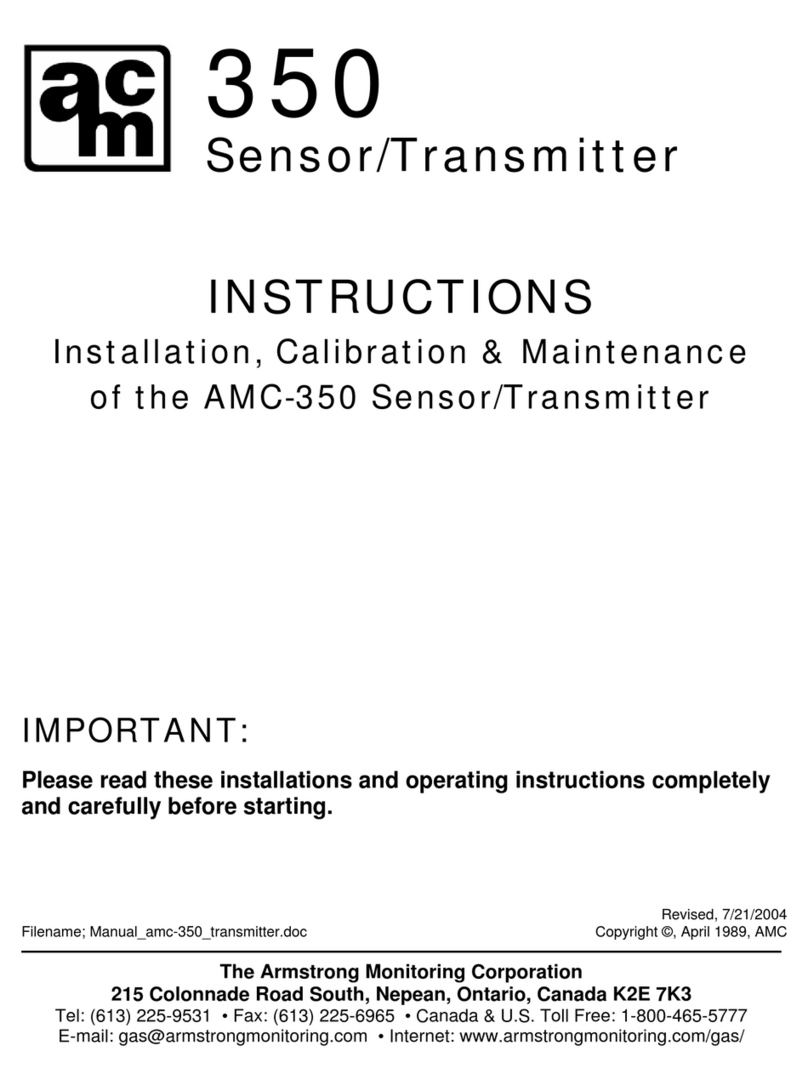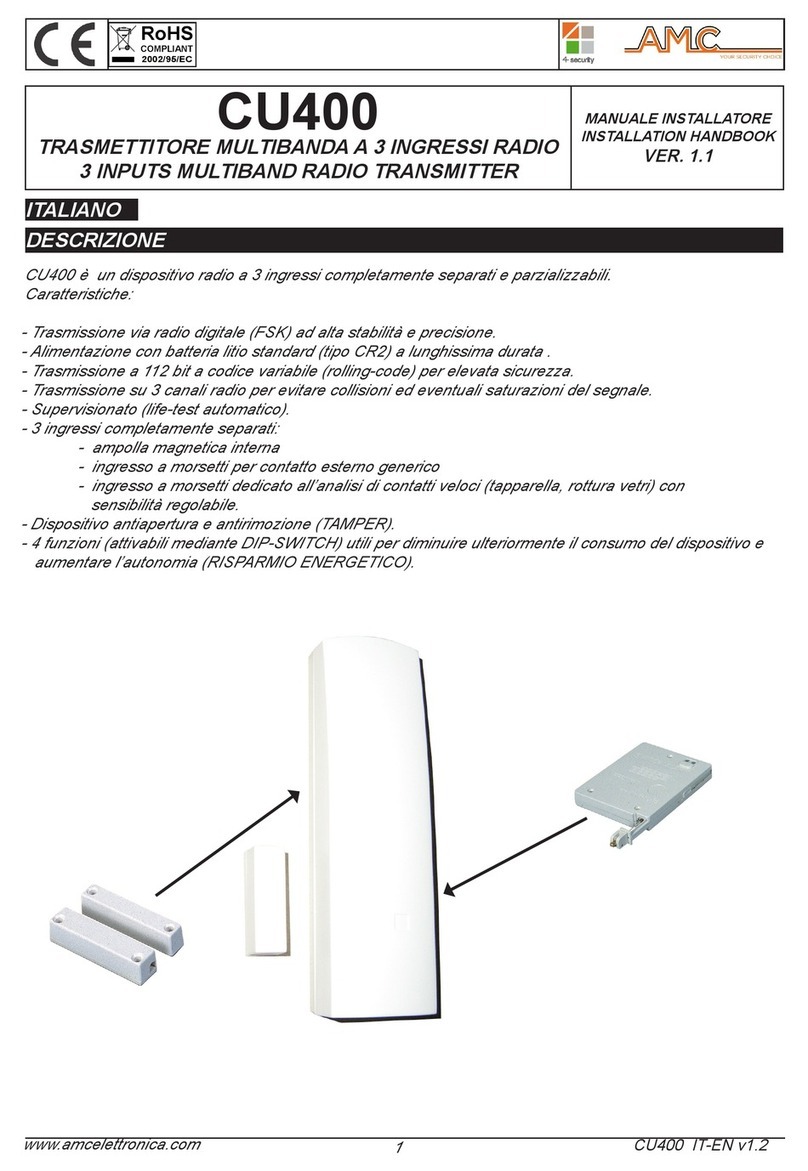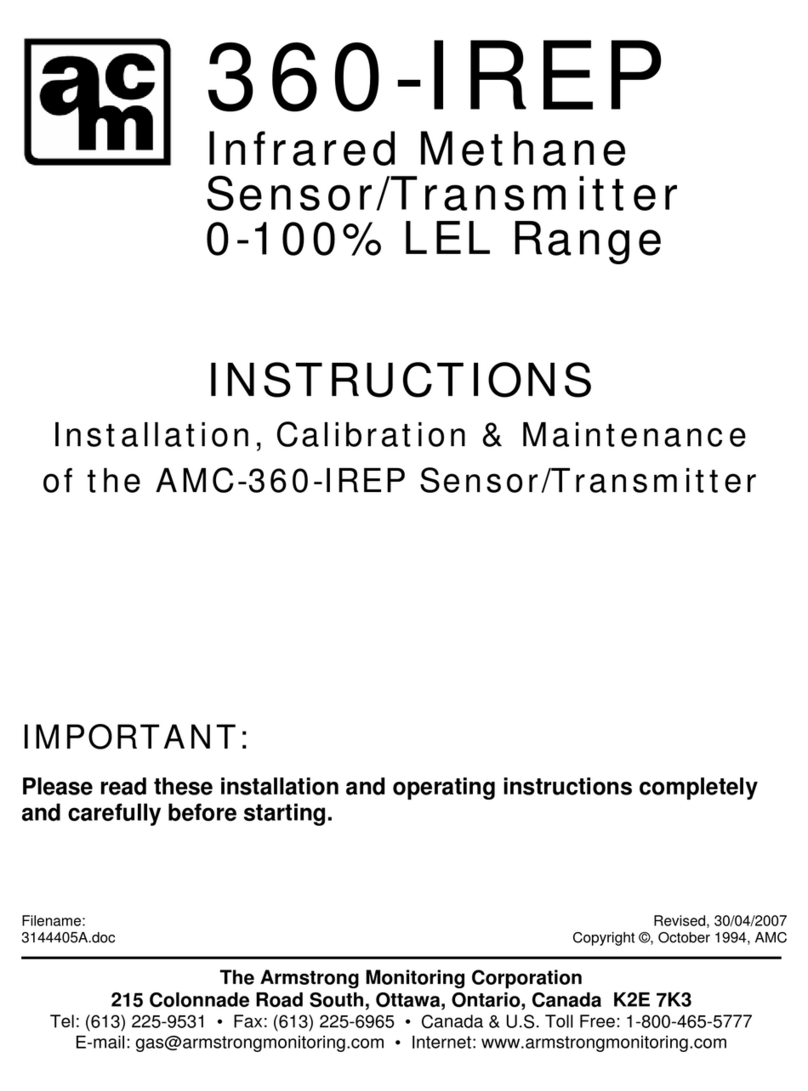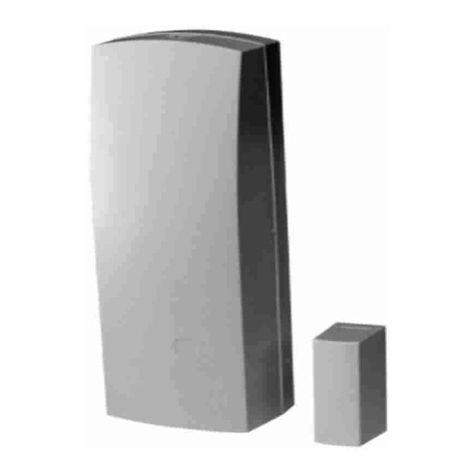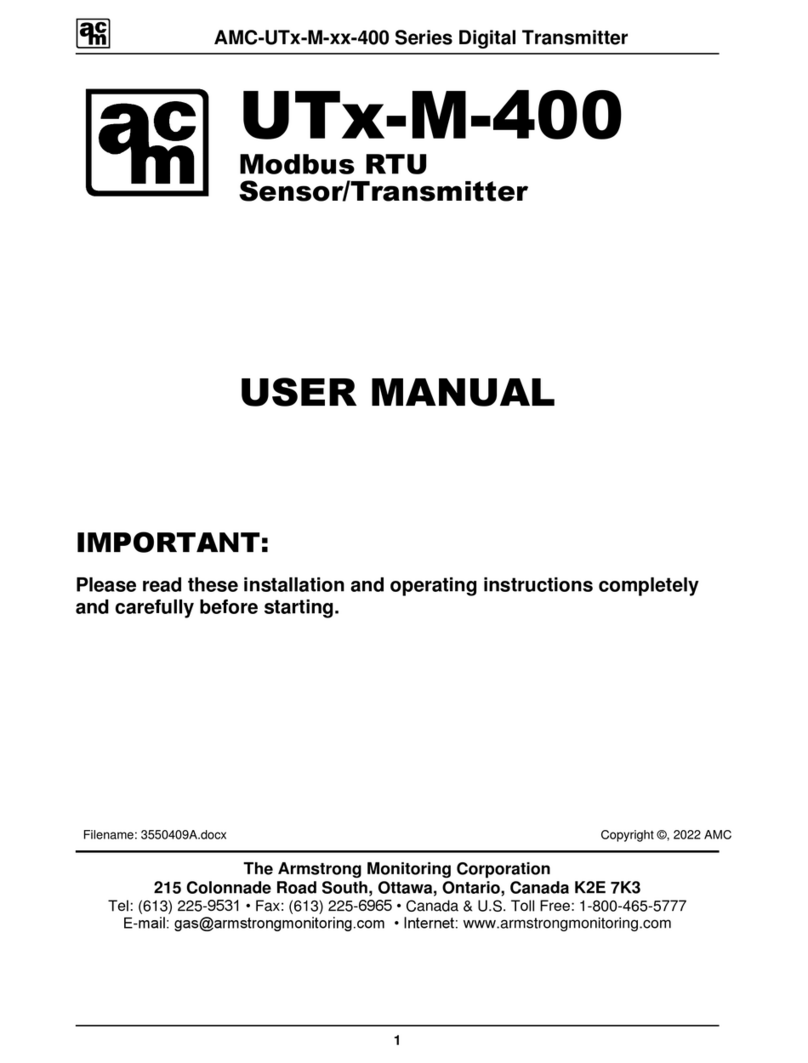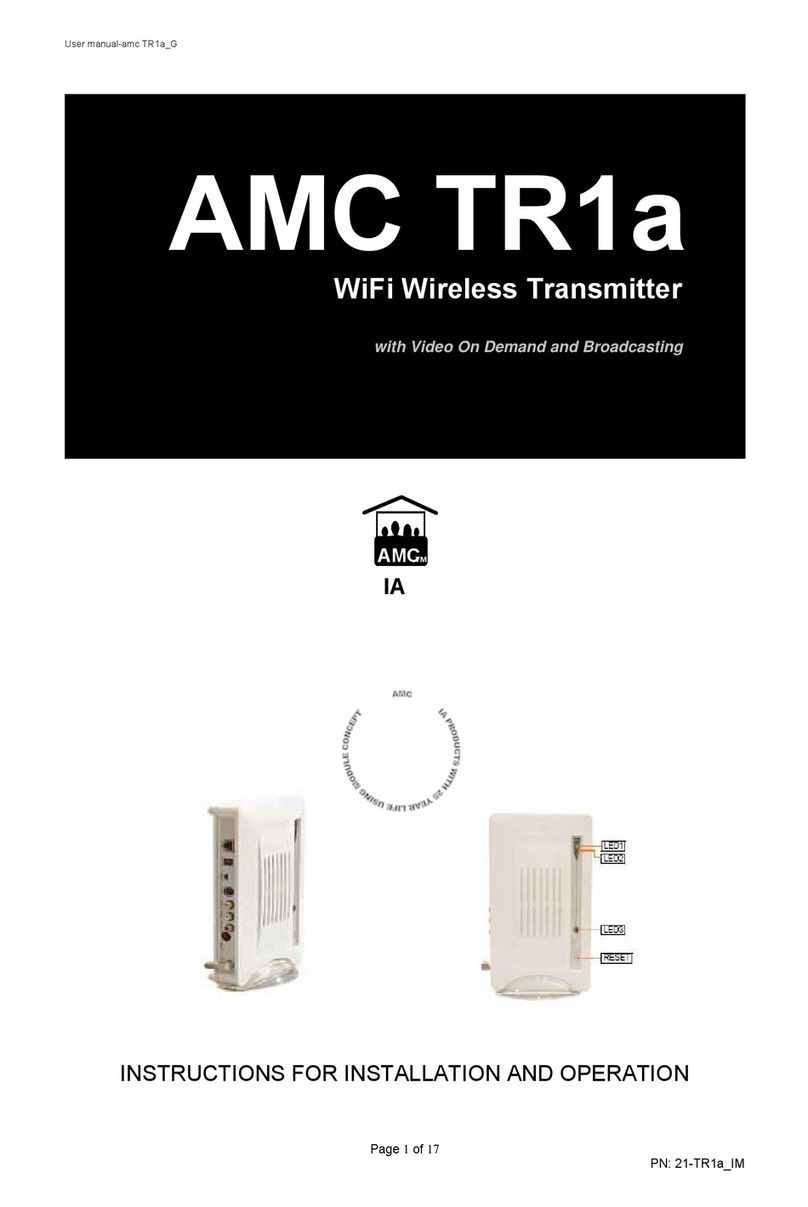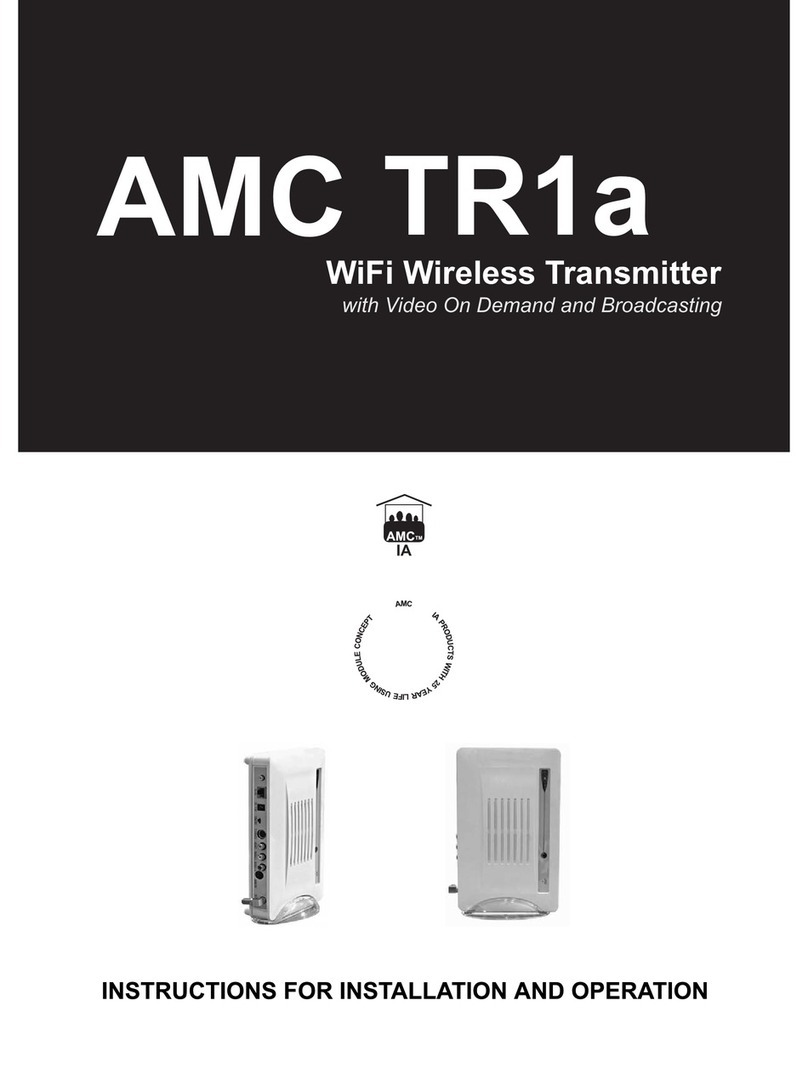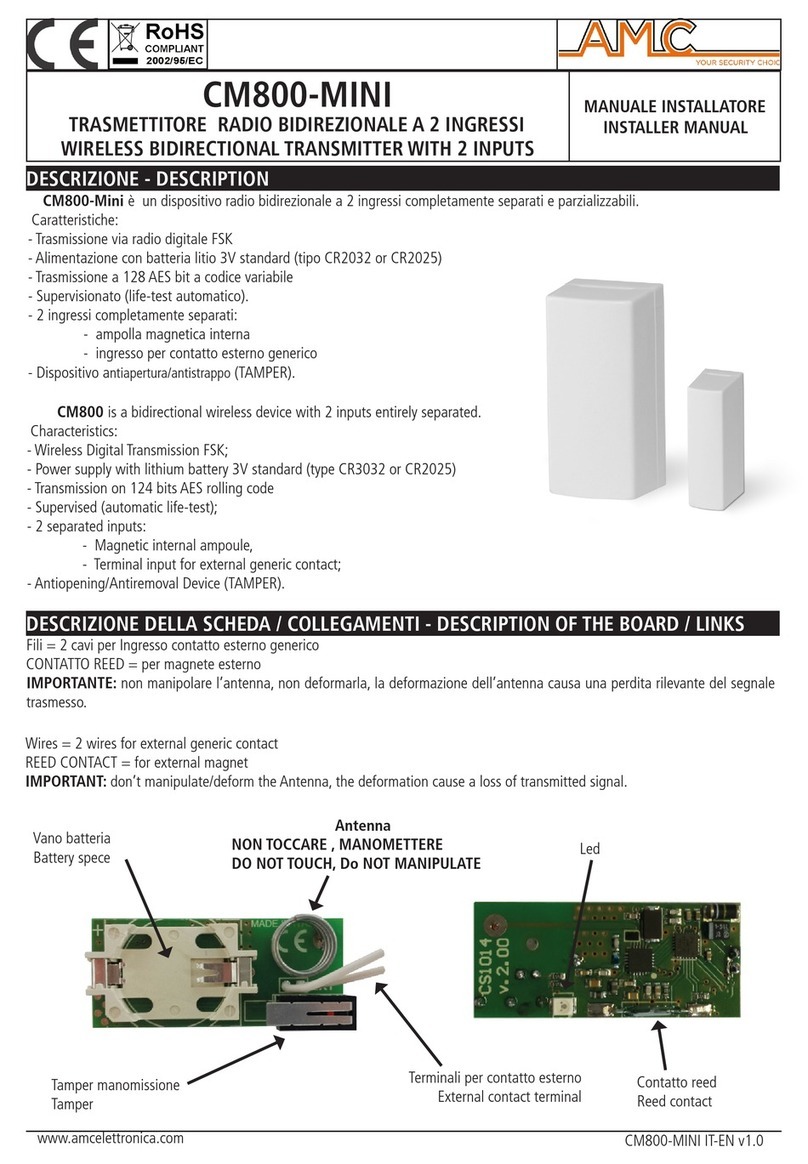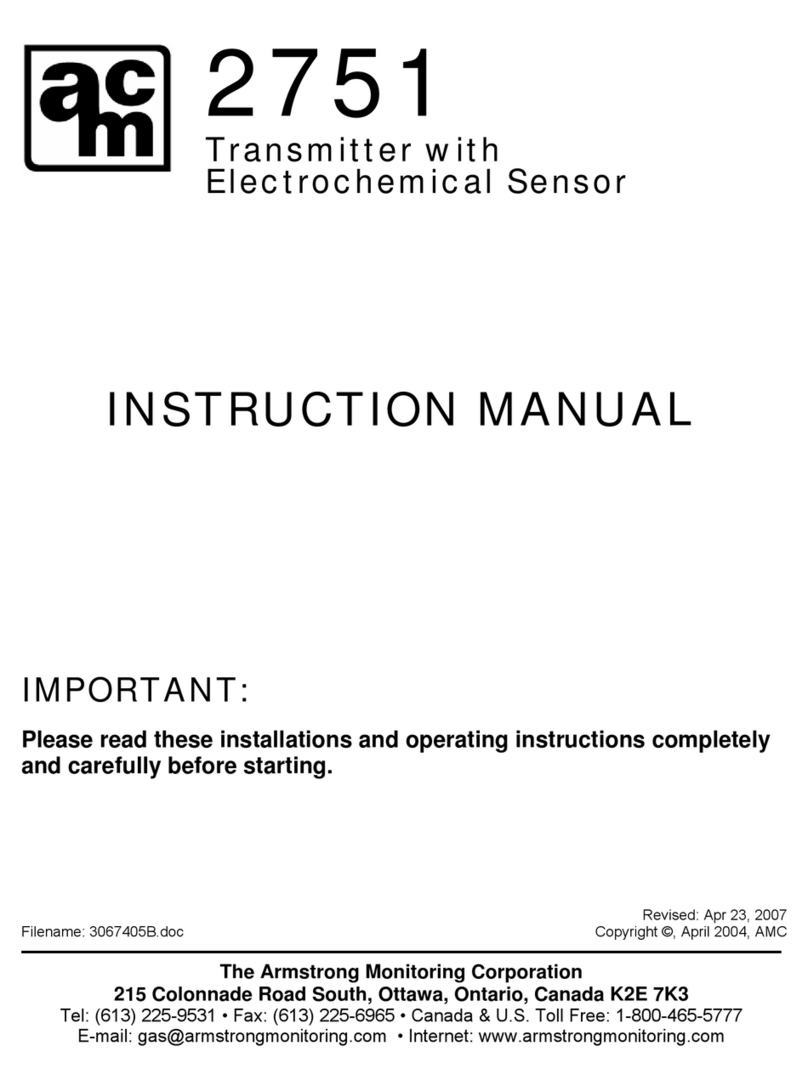
AMC-DTR Sensor Transmitter User Manual
2
4INSTALLATION INSTRUCTIONS
4.1 Introduction
Important: This manual describes both the 2-Wire and the 3-Wire 4-20mA versions of the
AMC-DTR. 2-Wire versions are only possible if using an electrochemical sensor and the DTR-
10-0232 Display PCB IS THE ONLY PCB IN THE ENCLOSURE. If the DTR-10-0233 I/O
Power Supply is installed it is a 3-Wire version.
The AMC-DTR is a single or dual channel fixed-point gas monitor designed to provide
continuous monitoring of hazardous gases in the workplace. Monitored values are displayed in
their engineering units as well as graphically as a bar graphs or 30-minute trends (Figure 1).
Input types include Electrochemical toxic / oxygen sensors, catalytic bead combustible sensors,
MOS solid-state sensors, as well as various millivolts, volt and 4-20mA inputs. Sensors supplied
by the factory include an 8-wire Smart Sensor interface capable of configuration data uploads to
the AMC-DTR. Traditional 3-wire Simple sensors, without the smart interface, are also
supported by the AMC-DTR. Its advanced microcontroller electronics and superior graphic LCD
operator interface offers enhanced diagnostics and fault analysis not possible in competing
products. The AMC-DTR Transmitter provides a standard 4-20 mA output signal for connection
to control systems or other alarm instrumentation. Available options include an Alarm Relay /
RS-485-Modbus board or an isolated 4-20mA output. Non-volatile memory retains all
configuration data during power interruptions. The magnetic, non-intrusive calibration can be
easily performed by one person without opening the enclosure. A standard “real time clock &
calendar” feature allows data logging of calibrations and alarm events for recall to the LCD
readout or over the serial port.
A separate PC compatible USB Interface allows a Smart sensor to be loaded with configuration
variables via a PC and upload this data to the AMC-DTR. This includes alarm set points, range,
target gas, calibration constants and other variables required to match the AMC-DTR to a
specific application. For traditional Simple sensors, without the smart interface, the USB
interface allows direct AMC-DTR configuration from a PC.
Electrochemical toxic and oxygen DTR’s are capable of 2-wire 4-20mA operation (section 4.6.1)
when the alarms / modbus option and LCD backlight are not required. Catalytic LEL sensors, or
addition of the DTR-10-0234 Alarms / Modbus option, require the DTR-10-0233 I/O Power
Supply board providing 3-wire 4-20mA operation (section 4.6.2).
Only periodic calibration checks are needed to assure dependable performance. Operator
interface is very intuitive with the LCD displaying data both graphically as bar-graphs / trends
and in engineering units (Figure 1). Additional features include:
•No potentiometer or jumper settings required. All setup is with menus accessed via the LCD
/ magnetic keypad operator interface without opening the enclosure.
•Field adjustable alarm levels may be high, low, fault, fail-safe, latching and
acknowledgeable.
•New alarms cause front LED’s to flash and become steady after acknowledge.
•CAL MODE advises when to apply gas during calibrations
•One half hour trend screen shows rate of change of gas exposures
•Sensor life bar-graph updates after each SPAN calibration.
•Modular design affords efficient installation and plug in sensors allow changing target gases
after installation







